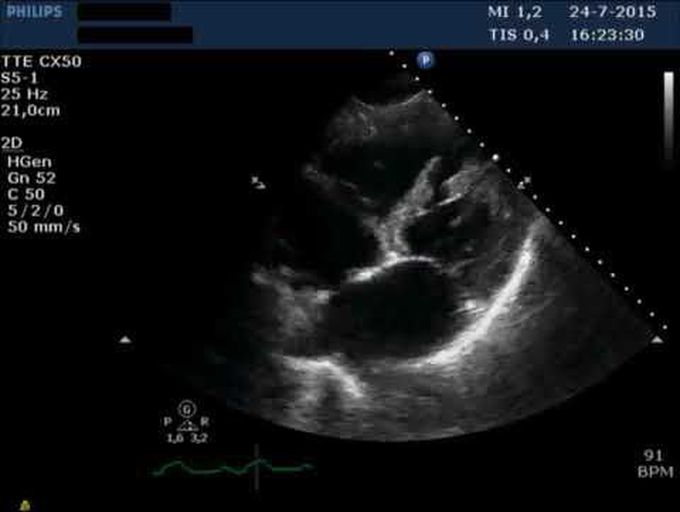


Ventricular Septal Defect after Acute Myocardial Myocardial lnfarction
A previously healthy 76-year-old man with a 1-week history of continuous chest pain presented to the emergency department with rapidly progressive dyspnea on exertion. His blood pressure was 70/40 mm Hg, and he had signs of systemic hypoperfusion. Cardiac auscultation revealed a harsh holosystolic murmur, which was heard over the entire precordium. The electrocardiogram showed inferior ST-segment elevations that were consistent with acute or subacute myocardial infarction (Panel A). Transthoracic echocardiography revealed a left ventricle (LV) with overall preserved systolic function and inferior akinesis, a dilated, severely impaired right ventricle (RV), and a large, sharply demarcated interventricular septal defect (VSD; Panel B, arrow; and Video 1) with a large, turbulent left-to-right transseptal flow (Panel C, and Video 2) (LA denotes left atrium, and RA right atrium). Coronary angiography revealed occlusion of the right coronary artery. Emergency surgical intervention was performed because of persistent cardiogenic shock despite supportive therapies, including intraaortic balloon pump. Closure of the septal defect was not successful owing to the fragility of the infarcted tissue. The patient died from progressive heart failure.

